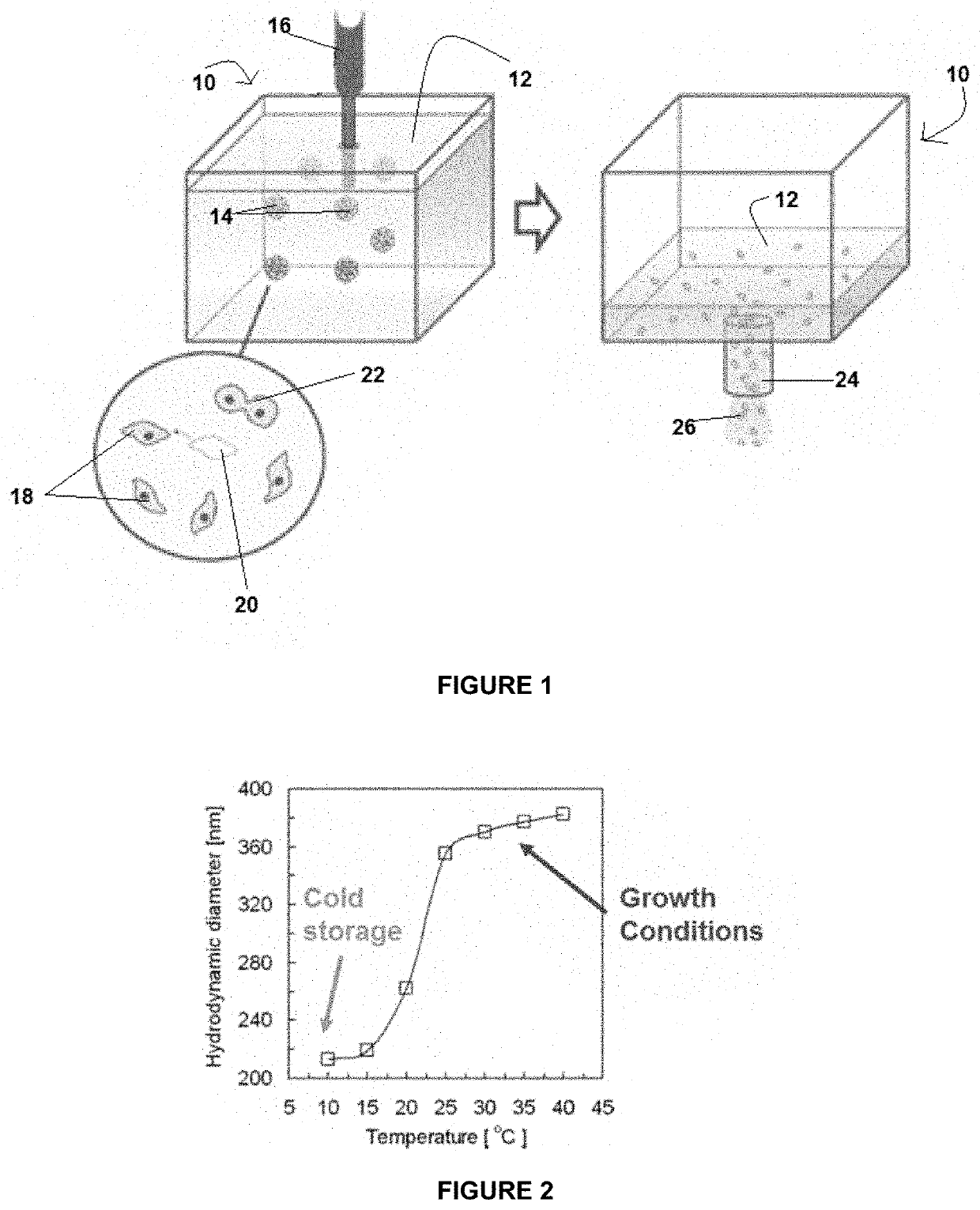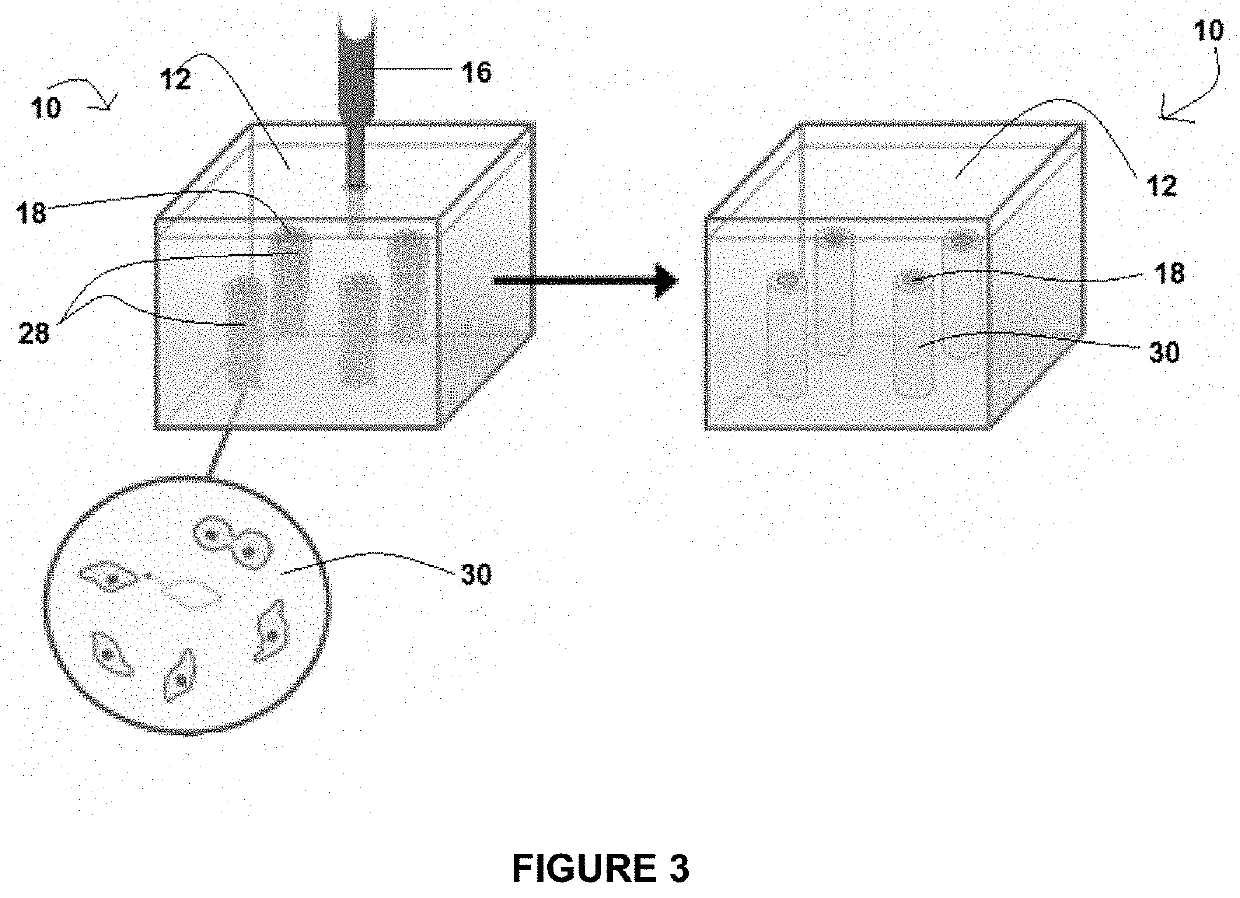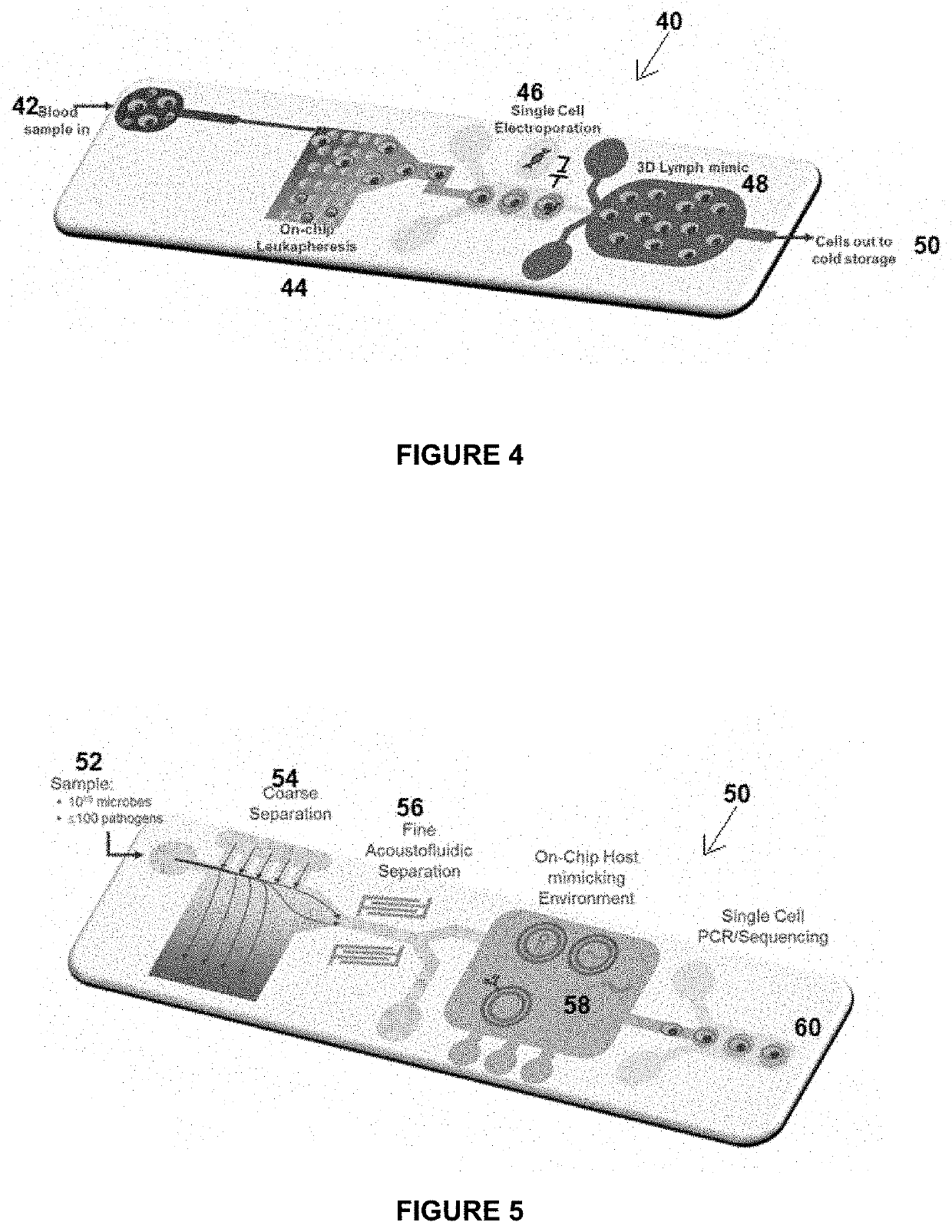Thermally responsive microgel particles for cell culture applications
- Summary
- Abstract
- Description
- Claims
- Application Information
AI Technical Summary
Benefits of technology
Problems solved by technology
Method used
Image
Examples
example 1
rapy
[0062]Chimeric Antigen Receptor T-Cell (CAR-T) Therapy has the potential to treat numerous difficult-to-drug targets or diseases that subvert traditional therapeutics. CAR-T is already employed in the treatment of blood cancers, such as lymphoma and leukemia. The current treatment requires a time and labor intensive process that involves the steps of separating a patient's T-cells from a blood sample; transfecting the T-cells with a nucleotide to have them express a CAR that will target the CD19 antigen on the surface of a cancerous cell; activating growth of the T-cells using CD3 / CD28 antigens or artificial antigen presenting cells (aAPCs); expanding the T-cells in an in vitro culture; and finally administering the T-cells in the original patient as a redirected, cancer-killing cells.
[0063]The current CAR-T treatment faces a formidable scaling problem due to the high cost, time and labor requirements. Mass production of similar therapies require significant design and developme...
example 2
lacement
[0065]The microgel particles of the present disclosure can be employed as a scaffold for neuronal stem cell models.
[0066]Upper limb injuries are among the most frequent causes of disability in military patients, and over fifty percent (50%) of the disabilities are the result of nerve trauma. Peripheral nerve injuries (PNIs) are a significant complication of injuries incurred in the military setting with devastating, long term consequences, which can include sensory deficit (loss of sensory perception, chronic pain, and weakness (reduced strength and motion). PNIs typically accompany radial nerve trauma from a blast injury. While, cell-based therapies are being developed with the potential to stop or reverse nerve damage and the resulting disabilities in patients, manufacturing and scalability issues have prevented translation of these technologies to the patients who need them.
[0067]The present disclosure is contemplated for use in nerve replacements designed to stop or reve...
PUM
 Login to View More
Login to View More Abstract
Description
Claims
Application Information
 Login to View More
Login to View More - R&D
- Intellectual Property
- Life Sciences
- Materials
- Tech Scout
- Unparalleled Data Quality
- Higher Quality Content
- 60% Fewer Hallucinations
Browse by: Latest US Patents, China's latest patents, Technical Efficacy Thesaurus, Application Domain, Technology Topic, Popular Technical Reports.
© 2025 PatSnap. All rights reserved.Legal|Privacy policy|Modern Slavery Act Transparency Statement|Sitemap|About US| Contact US: help@patsnap.com



